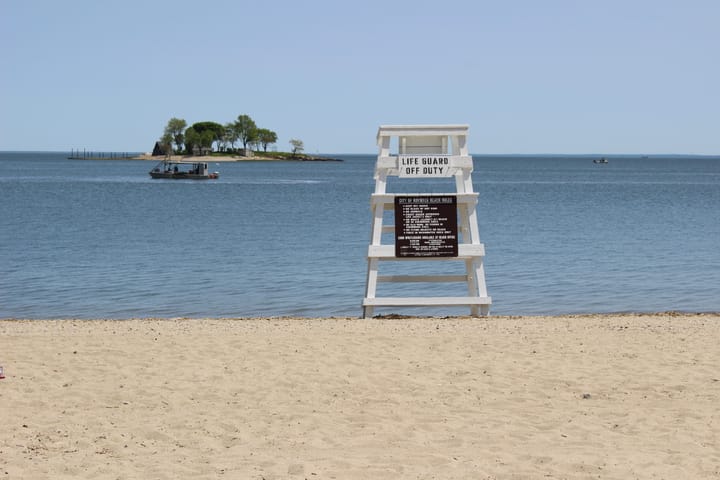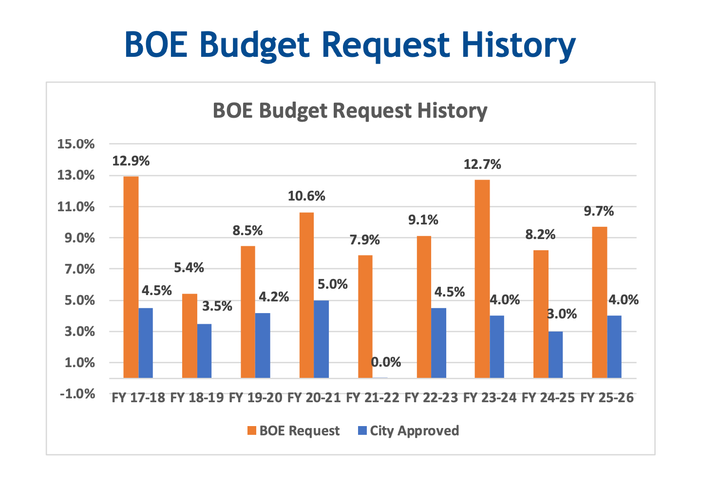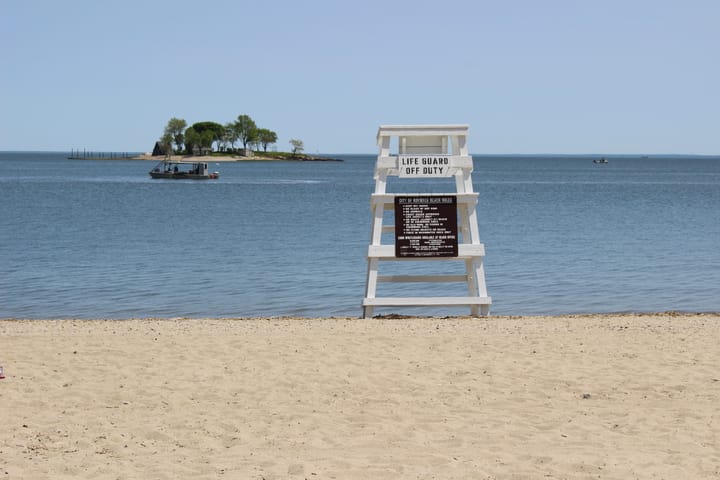What’s the Future of the Norwalk Transit District?
A proposed bill before the state legislature calls for dissolving the Norwalk Transit District, which provides fixed route buses, paratransit services and more to Norwalk, Westport, and other neighboring communities.
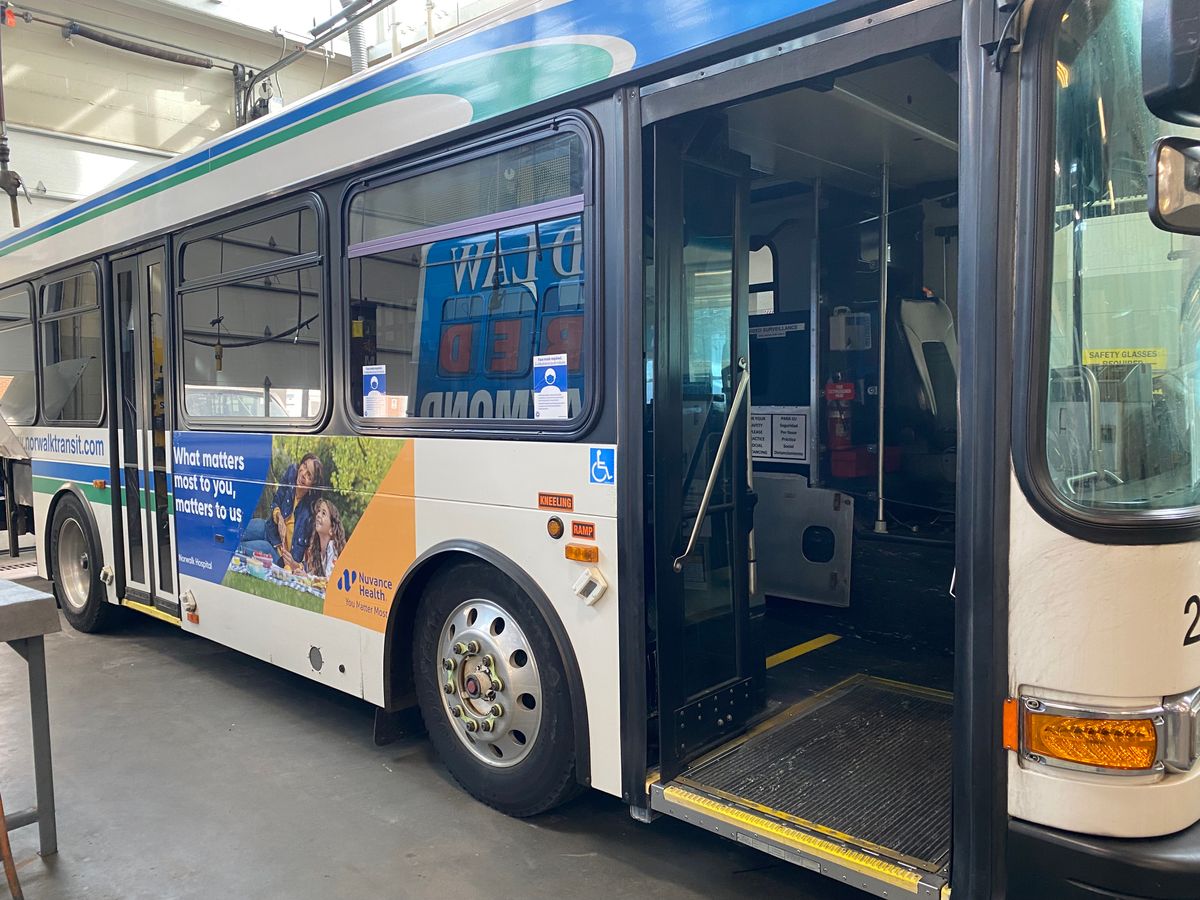
There have been more than 1 million rides across buses, shuttles, and vans run by the Norwalk Transit District from July 2022 through February 2023. But the future of who will provide those rides and what they could look like is in flux, due to a proposed bill before the state legislature to dissolve the district.
The transit district currently provides a mix of transportation options in Norwalk and surrounding communities, including: fixed route bus service, paratransit or door-to-door service, for those who are disabled or elderly, commuter shuttles, and on-demand transit.
State Senator Bob Duff, who represents Norwalk and part of Darien, introduced the legislation this session, along with other members of the Norwalk delegation—Representatives Kadeem Roberts, Dominique Johnson, and Lucy Dathan.
The proposed bill calls for “the Norwalk Transit District [to] be dissolved on January 1, 2024,” and for the Connecticut Department of Transportation (ConnDOT) to “provide transit services to the areas previously served by the district.” The stated purpose of the bill is “to create a seamless system of public transportation for residents in Norwalk.”
The proposal to dissolve the district has been incorporated into a larger proposed piece of legislation, S.B. 904, which includes recommendations for improving road safety from the state’s traffic administration and department of transportation.
Matt Pentz, the recently appointed CEO of the Norwalk Transit District, said that while he is working to continue to improve the transit district, keeping it local is beneficial to the residents of Norwalk and those who rely on its service.
“I don’t think it’s a good idea. I think local governance is important,” Pentz, who also lives in Norwalk, said. “The city is evolving, and our board lives here. They see what’s going on. I think it’s key to have local input.”
Given the uncertainty surrounding this service, let’s explore what transit districts are, what the Norwalk Transit District provides, and what this legislation could do.
What are transit districts?
In Connecticut, bus service is provided either by the state, through CTtransit, or through a locally-run transit district. The state’s Department of Transportation “owns the local bus systems in Hartford, New Haven, Stamford, Waterbury, New Britain, Bristol, Meriden and Wallingford, and operates them under the CTtransit brand name.”
In these communities, the state is “fully responsible for all operating deficits and capital costs, and it contracts out with other providers for their paratransit service in those areas. In other areas, bus service is operated by local transit districts, such as the Norwalk Transit District or the Greater Bridgeport Transit District—two that service our region of the state. Greater Bridgeport serves Bridgeport, Fairfield, Stratford, and Trumbull.
The state has “transit operating assistance contracts with the districts to cover operating deficits up to a predetermined budget amount.” While local governments usually provide some support, ConnDOT estimates that it “supports about 90% of the deficit funding in the urban systems, and the state and federal government provide 83% of the deficit funding in the rural systems.”
The Norwalk Transit District
Norwalk Transit District, which is celebrating its 50th anniversary this year, has two main categories of services—those for the general public (primarily fixed route buses that run in Norwalk) and paratransit services for the elderly and disabled residents. As part of the general public services, it provides:
- Fixed route bus service in Norwalk, with one route that extends into Wilton
- A fixed route partnership with the Greater Bridgeport and Milford Transit Districts to operate the Coastal Link bus service seven days a week between Norwalk and Milford
- Microtransit, called Wheels2U, in both Norwalk and Westport, where residents can request a van to come pick them up during certain hours—morning and afternoon service to the train station in Westport throughout the week; and evening and weekend service in Norwalk Thursday through Sunday.
- Commuter shuttles in Greenwich and Norwalk
According to Pentz, paratransit services are required to be provided to those who are disabled or in some cases elderly within three-quarters of a mile of a fixed route, and the district provides those services to people in Norwalk, Westport, and Wilton, as well as Stamford.
“We do those three towns and a big piece of Stamford—Stamford, that’s serviced by CTtransit, so they do all [Stamford’s] fixed routes, but they don’t do paratransit, so we do paratransit,” Pentz said.
Go behind the scenes of the Norwalk Transit District.
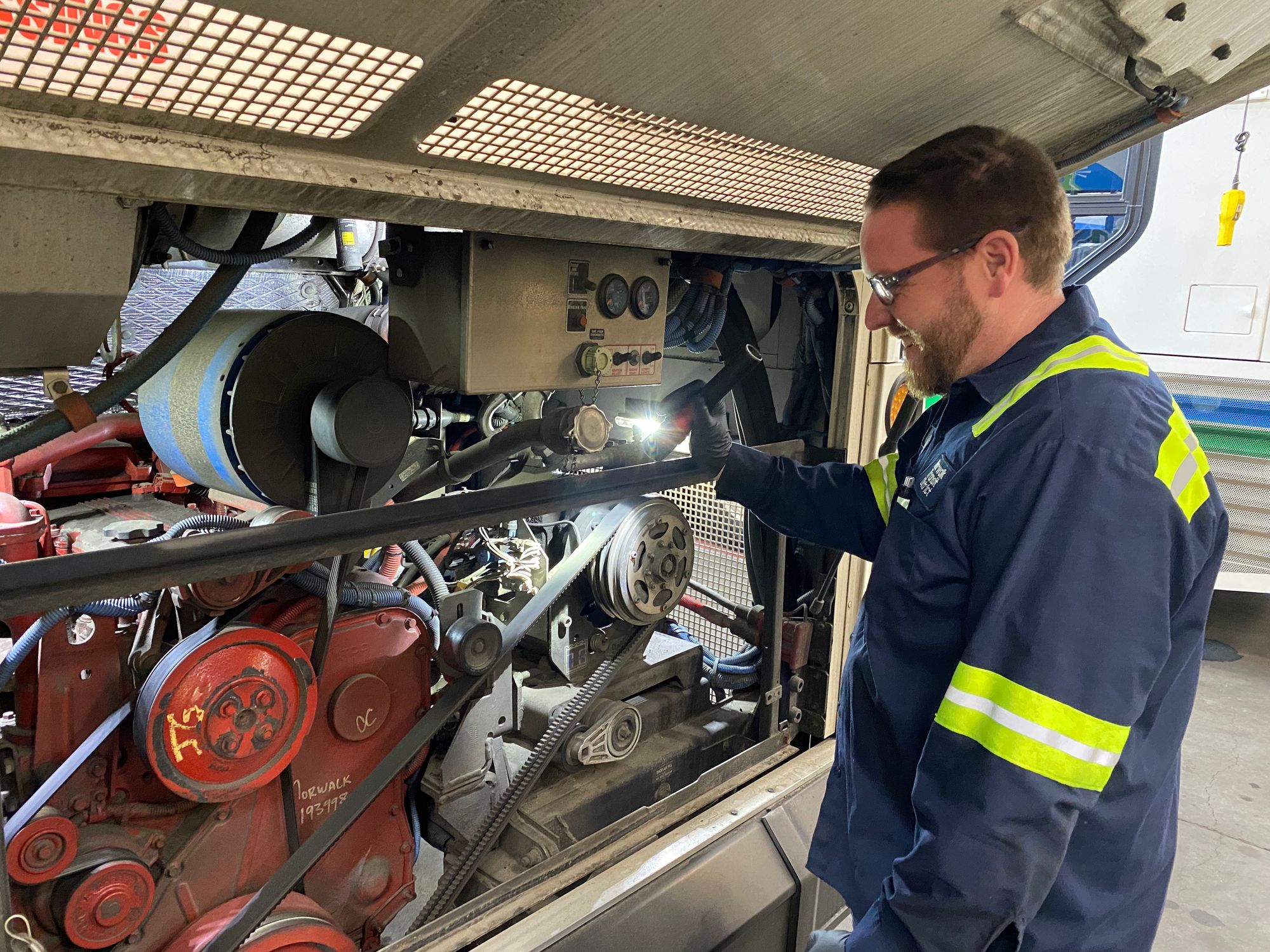
A Look at the Legislation and Potential Impacts
Duff did not respond to a request for comment. We asked what benefits he thought this legislation would provide, what would happen to paratransit service, if there would be interruptions to service, and how he believed this would improve service.
However, Duff, Dathan, Johnson, and Roberts did write a letter as a part of the bill’s public hearing advocating for the dissolvement.
“We feel that Norwalk would benefit from eliminating the Norwalk Transit District's bureaucracy and merging the bus routes into CT Transit,” the letter reads.
Financial Impacts
The district receives most of its funding from the state, with some local funding. In 2019, it cost more than $14 million to run the transit district, and it receives about $1 million from local municipalities for its services, with the rest coming from the state.
Duff and the legislators state that combining Norwalk Transit with the state would provide financial efficiencies.
“The funds saved can instead be used to improve bus service in Norwalk and the surrounding communities. With a larger fleet, CT Transit can more easily handle broken down buses. There is greater purchasing power because of economies of scale. With the majority of Norwalk Transit District's operating funds already coming from the State of Connecticut, this just makes sense!”
However, the financial impact of the legislation, which was done by the state’s Office of Fiscal Analysis, doesn’t show overall cost savings, at least for the first 18 months or so. It states that there would be a local savings to Norwalk, Westport, and Wilton as each of them contribute to the Norwalk Transit District, but the cost for the state Department of Transportation, who would be taking over the services, would increase.
The analysis projects that the savings to the local municipalities would be $620,000 in fiscal year 2024, since the district would dissolve halfway through, and $1.28 million in fiscal year 2025. It also projects that the cost to the DOT would be $1.35 million in fiscal year 2024 and $2.8 million in fiscal year 2025, assuming that “DOT provides the former local contributions and incurs additional costs associated with managing the services.”
The additional costs come from moving the services to CTtransit, which includes “higher driver wages and contractual management services over operations, as DOT does not have existing expertise in this area.”
Ridership and Routes
The ridership on the transit district’s fixed route services has increased since fiscal year 2019, the last full year of service pre-COVID. From July 2018 through February 2019, there were 911,528 rides compared to 1,015,480 for July 2022 through February 2023. Paratransit ridership has slightly declined, from 77,744 for those same months in 2018-19 to 56,940 for 2022-23.
Pentz said that he believed the state’s free fare program, which ran through April 1, helped get people back using the bus service.
“I think the free fare program has really helped—that got the riders out,” he said. “Our fixed route ridership is above pre-pandemic levels.”
He said that they’d be monitoring ridership as fares were reimplemented to see what the trends might be.
One of the biggest issues raised by both the legislators and Mayor Harry Rilling who submitted a letter as a part of the public hearing, was that the district hasn’t reevaluated its routes.
“It has been decades since the Norwalk Transit District has reevaluated routes or taken the means necessary to understand the needs of their ridership,” Rilling said. “Their current routes do not provide access to many parts of our city.”
Pentz, who was named CEO in January, noted that while they’ve had to spend time addressing this legislation they’ve also been trying to work on some of the issues raised, such as the routes. The district is about to award a contract to a consultant to do a comprehensive service analysis.
“They’re going to look at the routes, they’re going to look at the opportunities, we’re going to talk a little bit about electrification when that comes down,” he said.
Tanner Thompson, chair of the Norwalk Bike/Walk Commission, also submitted testimony to the legislature, raised a variety of questions and concerns, but noted that this plan to reevaluate routes was a huge step.
“If CTtransit could run more buses, improve the route network faster, and collaborate with the City of Norwalk better than the Norwalk Transit District, then I would be the first to support this bill,” Thompson wrote. “However, between the encouraging recent developments at NTD and the paucity of detail on a theoretical CTtransit merger, I am skeptical.”
The legislators’ letter also cited the district’s ending shuttle service to Norwalk Community College as part of why it should be dissolved. Many members of the NCC community voiced their frustration at the time over getting rid of the shuttle that they used to get to class.
“We in Norwalk have been victims of a transit district that doesn't always take into account the residents' needs,” the letter reads.
Pentz said they canceled the specific community college shuttle due to lower ridership, but provided some added service on the bus route that runs closest to NCC.
Local Knowledge
One of the biggest reasons that Pentz and Thompson cited in favor of the district is that its leadership knows Norwalk and the surrounding communities it serves.
Thompson questioned whether or not folding the district into ConnDOT would cause a lack of local familiarity and service.
“Moving the governance of a transit agency from a local level to a state level inherently involves a trade-off between regional expertise and local familiarity,” Thompson wrote in a letter. “As much as CTtransit may do a better job of servicing regional routes, I think it’s a reasonable concern that they won’t meet the local needs of Norwalk as well as an agency with a smaller scope.”
Still, Rilling said that he believed dissolving the Norwalk Transit District and making it part of CTtransit would “serve far more residents in our community” and provide “a seamless transition for Norwalk residents” to get to other cities.
What about the Westport Transit District?
Westport, a community of under 30,000, has its own long history with transit. The Westport Transit District has been around since 1974 and was highlighted in The New York Times in the 1990s for the fact that a town of its size had successful transit services.
But over time, ridership patterns changed and services were cut back. Westport eventually contracted with the Norwalk Transit District to provide commuter shuttles to the Westport Transit District as well as paratransit services.
However, coming out of COVID, those shuttles have been converted to on-demand microtransit through Wheels2U.
“We have the Wheels2U commuter service, which goes from 5:45 to 10 in the morning and from 4 to 9:30 p.m. at night,” said Peter Gold, who serves as the head of the Westport Transit District, which is a volunteer position, and also as a member of the Representative Town Meeting. “It covers the entire town, you can take it from anywhere in town to the town station.”
For March 2023, Gold said they were doing just over 75% of the riders they were doing compared to the month before the COVID-19 pandemic hit.
“So we’re doing pretty good—especially since people aren’t commuting regularly, and we’re still doing three quarters of the rides, so that’s pretty good,” he said.
Gold said that the transit district gets about two-thirds of its funding from the state, and the rest locally. This year—and for multiple years—the Board of Finance has recommended cutting funding for the Westport Transit District. Gold said that they’ll be appealing to the RTM to restore the funding before its May 1 budget vote.
Pentz said that the switch from commuter shuttles to microtransit has been beneficial in terms of efficiency and environmental impact.
“You had commuter shuttles running on a loop and now you have Wheels2U shuttles that are on-demand, they’re smaller, they’re a little more fuel efficient—so we’ve saved on mileage, we’ve saved on fuel, so it’s better for the environment, and it’s on-demand so it’s more efficient,” he said.
Gold said that he has questions about the proposed legislation since it would abolish the Norwalk Transit District, but not the Westport Transit District.
“I’m not sure what that means for us,” he said. “It says that ConnDOT would take over the Norwalk Transit District’s services, but I’m not sure what services that means.”
“We have a good relationship with Norwalk,” Gold added. “They meet our needs and they’re responsive when we call them.”
What’s Next?
The proposed language to dissolve the district is now included in a larger package of legislation, S.B. 904, which involves recommendations to improve traffic and pedestrian safety across the state. The bill has been listed on the Senate calendar for potential action this session.

